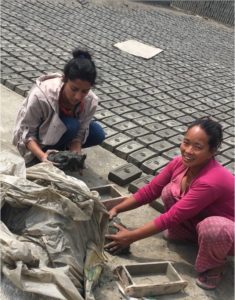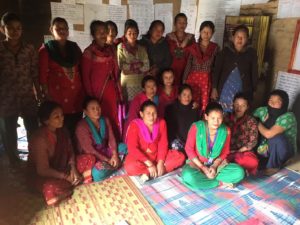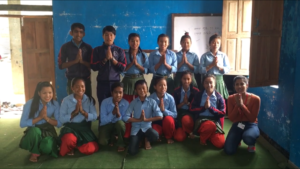Education Unlocks the Chains of Bonded Labour
Brick factories are not an ideal place for children to survive, learn or be protected. Yet in Nepal, seeing unpaid child labourers in brick factories is common practice. These children serve as an extension to their parent’s labour…which leaves me thinking, are children even considered to be people in this context?
It is estimated that 1.6 million children in Nepal (between the ages of 5 – 17) are working; of which, 621,000 are estimated to be engaged in hazardous work and more than half are girls.
In brick factories, parents are bonded into work by a one-time payment system, which often is very low, at the start of the migratory working season. This means workers are unable to quit until the season finishes – like a loan that you have to work to repay. Labourers work 10 days straight with only one day off, and often start at 3 am and continue until sundown, this often includes child labourers.
When we asked Rama (pictured to the right) about her future and the future of her work she said: “making bricks is the only skill I have that I can be paid for… I am not educated; I have nothing else but this skill.”


An in-person visit proves this harsh truth. At first sight, the factories are engulfed by such beauty it’s hard to imagine that they house such a devastating reality for the most marginalized people. But within a few minutes of the visit, the lush greenery turns into a hot, dusty vanishing point of endless, freshly made bricks and diligent workers filling trucks and going about their daily business in the factory.
Off to the side is the makeshift settlement of the migrant labourers and their children. The homes are built with available materials and must have been set up on the workers own time. This left me thinking: when would they have time to do this if they only get one day off every 10 days?
I travelled to Nepal to see how Save the Children is implementing policies and programs that prevent child labour in brick factories. The program uses a two-pronged approach: intervening where labourers are recruited and also in the factories where they migrate to conduct their work.


In the areas where bonded labourers are sourced, Save the Children educates families about unsafe migratory labour and provides alternative basic education classes, called SEEP (Self-Employment Education Program) to mothers. All of the women in SEEP classes are former bonded factories workers. They are empowered with the skills necessary to gain employment and meaningful work, while their children are able to thrive in their home communities.
While I was in Karve, Nepal, I went to a SEEP class to see how the program is impacting local mothers in the community. The women participate in a local governance system and have created small businesses to keep themselves and their communities running without having to migrate to make bricks. This includes ensuring the children in their community are protected and have access to education.
Our team in Nepal has worked with local governance and federal governance to ensure new child protection policies sanctioned by the government are being implement at a community level. Save the Children has set up child-led Child Protection Committees (CPC’s), where children learn about children’s rights, child protection, child labour, and roles and responsibilities in the new federated governance system. Children in CPC’s do not go back to work in the brick factories, rather they stay in their communities, get an education, remain under the care of their parents and guardians, and are kept safe from exploitation. They also empower other children in their communities through structured and peer supported interventions.

The second prong of the approach takes place where the bonded labourers migrate to conduct their work. Parents usually take their children into the factories because there is no where for the children to go during work hours. Save the Children has intervened by working with factory owners to forgo allowing children to work with their parents and instead, offer free daycare services with the provision of healthy food.
The happiness of children who feel safe and protected is unprecedented and beautifully contagious. As a children’s rights organization, Save the Children aims to ensure every child survives, learns, and is protected by 2030. Through this project in Nepal, we’re definitely in line with Convention from the UN Convention of the Rights of the Child, particularly referencing the right to protection from work that harms children, and is bad for their health and education. We’re also in line with the fact that children deserve to be happy, and we’re proud to support children by protecting them, providing accessible education, and putting measures in place to ensure survival.


